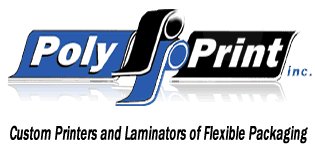Coefficient of Friction
Definition
Relevance to application performance
How COF is modified in films
Test principles
Related Terminology
Definition
Coefficient of friction (COF) is a unitless number that represents the resistance to sliding of two surfaces in contact with each other. These values should be between 0 and 1. Higher values indicate more resistance to sliding.
Static COF values are measured as two surfaces just begin to move against each other and kinetic values are measured after constant motion is achieved. ExxonMobil reports kinetic COF values.
Relevance to application performance
A laboratory film-to-film COF measurement is commonly used in the flexpack industry to quantify and compare film frictional surface properties in a consistent and convenient way. There are no universally good or bad COF values, but generally values over .50 are considered non-slip surfaces and values less than .20 are considered high-slip films that can be prone to roll telescoping.
Optimal slip properties vary by application, but can be critical for good machinability and package transport as represented in Table 7.
| Situation | Desired Effect | Importance |
|---|---|---|
| Film passes over HFFS fin wheel deck plates. | Low outside friction, film-to-metal | Prevents drag and film jams. |
| On VFFS, film enters forming collar as horizontal flat web and is transformed into a vertical tube. | Low outside friction, film-to-metal | Prevents film squealing, inconsistent film feeding and inconsistent bag lengths. |
| Filled packages are being stuffed into corrugated shipping boxes. | Low outside friction, film-to-film | Allows packs to slide against each other and settle for easy carton closing. |
| On friction belt drive VFFS, servo-driven belts push and move film against inside tube. | Moderate outside friction, low inside friction | Belts must "grab" outside surface to move film, while inside surface must slide over stationary tube to prevent jams. |
| Filled packages slide down a chute to reach downstream packaging operations. | Low outside friction, film-to-chute | Keeps products moving. |
| Filled packages are carried on an inclined conveyor belt. | Moderate or high outside friction, film-to-conveyor | Keeps product from losing placement or falling off conveyor. |
| Table 7: Examples of various applications requiring different fictional properties | ||
You can see from the table above, that each different situation has very different stresses and expectations. Sometimes the film is forced to change shape, or slide across a metal surface, or "grab" against a drive belt. It's impossible for a laboratory measured film-to-film COF to predict performance in all these applications. Instead, film-to-film COF measurements are used for process control to ensure the consistent production of a film that has been proven during the product development process to work in its target applications.
For example, a key to good performance on a VFFS machine is the film's outside frictional properties that allow it to travel over the forming collar without squealing or inconsistent feeding. ExxonMobil produces films with high-tech, non-migratory slip systems that have higher COFs than older fatty amide-type films, but run flawlessly on these machines. Traditional thinking might claim that "the COF is too high" with these films, but this is clearly not true. Then standard COF laboratory test is frequently not a good comparison test for predicting performance.
CAUTION: Do not draw conclusions about performance from small differences (differences of. 10 or less) in the laboratory film-to-film COF values of different film products. Instead, two different types of films should be compared by conducting trials in the desired application.
How COF is modified in films
An unmodified OPP film can have a COF of .70 or more. Most polymer films need to be specially formulated to reduce COF and have slip properties that result in good machining, i.e., good performance on packaging equipment.
The traditional technology to lower COF is to compound a fatty amide additive (generically called "slip") into the resin prior to film production. Over time, the fatty amide will migrate to the film's surface ("bloom"), because it is not completely soluble in the polymer. Although still in common use, this film technology has several problems.
- With heat, fatty amides will migrate from the surface back into the body of the film causing COF to increase.
- There can be a wide variation of the COF value, and it will change with time.
- These films are generally cloudier than films that don't contain fatty amides.
- When laminated to a sealant web and wound into a roll, the fatty amide additive can transfer to the sealing surface. This can cause a narrower sealing range and reduced seal strengths.
- Fatty amide can deposit and accumulate on rollers and packaging machine surfaces.
- The additive can interfere with print quality.
Most ExxonMobil films do not incorporate migratory fatty amide slip systems. Instead, the COF of these uncoated films is optimized with proprietary resin and additive formulations, which provide consistent, low friction performance. We refer to these as "non-migratory" slip systems. They eliminate the problems associated with using fatty amides to achieve a lower COF.
NOTE: The previous discussion refers to how COF is modified in uncoated coex and slip films. Remember, ExxonMobil acrylic-coated surfaces have inherently low and stable COF and provide excellent machine performance.
Test principles
COF is a simple ratio equal to the force required to slide one surface over another, divided by the force perpendicular to the contacting surfaces.
| COF = | Force to cause sliding of film surfaces (gf) | ; a unitless coefficient |
| sled weight (gf) |
ExxonMobil uses commercially available test equipment to measure film-to-film COF at conditions defined by ASTM D 1894. Table 8 provides a summary comparison.
Test |
Test Conditions |
|||||
|---|---|---|---|---|---|---|
| Measurement Apparatus |
Contacting Surfaces |
Sled Weight (g) |
Sled Contact Dimensions (in) | Pull Method | Pull Speed (in/min) | |
| ExxonMobil #430 | TMI #32-06 | Film to film | 200 | 2.5 x 2.5 | Moving sled | 6 |
| ASTM D 1894 | Not specified | Not specified | 200 | 2.5 x 2.5 | Moving sled on plane | 6 |
| Table 8: Comparison of COF test conditions between ExxonMobil and ASTM procedures | ||||||
The TMI tester provides a digital display of static and kinetic COF. Static COF is a higher value and is related to the force to get movement started. Kinetic COF is the number typically displayed in data sheets and is an average value after Y2inch of travel.
COF values generated in different laboratories or on different testers show wide variation when measuring the same film. For example, ASTM looked at the precision of COF data between laboratories and found standard deviations (depending on film type) between .02 and .12. Therefore, it does not make sense to assume that there is necessarily a real difference between, for example, a .28 measured by one company and a .34 measured by another.
Related Terminology
Fatty amide: Fatty amide is a very common migratory slip additive for plastic films. Fatty amides are greasy organic compounds such as stearamide, erucamide, behenamide and oleamide. They are compounded into resin and bloom to the surface after the film is produced.
Kinetic COF: Kinetic COF is the coefficient of friction value measured after surfaces are in motion at a constant speed.
Machinability: Machinability, also known as machine performance, is the ability of a film to travel and track well through a packaging machine. Different machines favor different film properties. Therefore, a film may demonstrate good machinability on one piece of equipment and not on another.
Non-migratory slip system: Non-migratory slip system Non-migratory slip system refers to newer technology that reduces the COF of films without the problems associated with fatty amides. ExxonMobil has been a leader in this area by engineering films with non-migratory additives and modified surfaces. These films have stable COFs and excellent converting and packaging machine performance.
Slip: Slip is the opposite of friction. "High slip" denotes low COF and low slip denotes a high COF. A "slip film" is a non-sealable film that is specifically formulated using additives or surface modification for reduced surface friction. "Slip additive" usually refers to fatty amide.
Static COF: Static COF is the coefficient of friction value measured as two surfaces just begin to move against each other.

